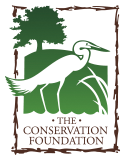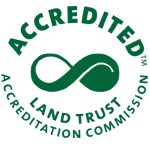In general, I would suggest starting small or installing in phases but having an overall plan, and not being afraid to make mistakes. It’s also helpful to tour other yards or natural areas with native plants. Author: Denise Sandoval, Conservation@Home assistant, [email protected]
1. Observe your yard. Observe the amount of sun, soil , problem areas, and views (your specific site conditions). Observe all the areas where water drains or runs off from your property. Take notes and photos.
2. Remove invasive plants – invasive plants are mostly non-native plants that are choking out native species, including their ecological benefits and variety of habitats they provide. Many of them spread into our yards inadvertently from surrounding areas, and unfortunately spread into natural areas from our yards. See Chicago Botanic Garden Invasive Species website for more information.
3.Come up with goals for your garden and prioritize your goals. For example, make it a goal to capture most of the water draining from your property (roof, driveway, sidewalks, etc). Screening your neighbors garage might be another goal. Providing wildlife habitat and stormwater managment are great goals.
4. Make a wish list native plants you would like to have based on physical attributes, size of garden area, goals, and those that will do well in your specific site conditions.
The best way to learn about native plants is to visit natural areas or yards that contain prairie, savanna or woodland plants. I also learned a lot about native plants by volunteering at restoration sites and highly recommend it.
Prairie plants are good for full sun (70-100% sun) because of their deep roots. Savanna plants are good for those folks who have very open shade (50-70% sun). Woodland plants are good for shady areas, but not deep shade. Each of these habitats have various degrees of moisture and soil conditions (rocky to clay), so you need to match your site conditions with the same conditions the plants would naturally grow in. If your just starting out, choose native plants that can take a range of conditions. Here are some places to get native plant information:
http://www.illinoiswildflowers.info/
Online Native Plant Catalogs also have useful plant information
Books:
Natural Midwest Gardens by Patricia Hill
The Midwestern Native Garden: Native Alternatives to Nonnative Flowers and Plants An Illustrated Guide – Charlotte Aldeman
Birdscaping in the Midwest: A Guide to Gardening with Native Plants to Attract Birds – Marriette Nowak
5. Some native plants like to spread a lot, and this behaviour is desired in healthy, larger, natural areas. In general, most native plants do spread (some more than others) and this is just one way nature ensures their survival. If you have a smaller yard or are just beginning, you may want to avoid the plants listed below. Many of the native plant catalogs will let you know which plants are spreaders or aggressive in smaller gardens. Here are a few:
Taller grasses (Big Bluestem, Switch, Indian Grass…)
Rosinweed
Cup Plant
False/Early Sunflower
Goldenrods
Canadian Anemone
Wild Petunia
Common Milkweed
White Snakeroot
Obedient Plant
Wild Golden Glow Rudbeckia
Sweetgrass
6. Using your plant list and site condition notes and photos, develop a landscape plan or have one developed professionally. For example, if you would like to capture run-off from your roof install a Rain Barrel and a Rain Garden.
The Conservation Foundation’s Rain Barrels
Rain Gardens Infiltrating Wisconsin
7. If any of this seems a bit overwhelming or you need some help with an overall landscape plan or planting, fortunately there are a few landscape professionals who are well experienced in native plant landscaping. See our current list:
The Conservation Foundation’s Guide to local landscapers
8. Installation: Purchase your plants from the following nurseries listed in the below website, and ask other native plant gardeners for their recommendations or for plants. Seek out local native plant sales usually held in Spring or Fall by local organizations or garden clubs. Ask your local plant nurseries to carry native plants if they do not and support those that do. Never obtain native plants from public areas or from the wild without permission, no matter how prolific. The following website list retail native plant nurseries by state.
9. Maintain your garden. Water new plants properly to conserve water, mulch woodlands with leaves, watch for spreaders, go organic, and learn about the diversity of life in your new Conservation@Home landscape. We even have a new program that recognizes environmentally friendly landscapes in the workplace called Conservation@Work.
10. If you have questions about Conservaton@Home or are ready for a Conservaton@Homes certification, contact Jim Kleinwatcher or Denise Sandoval. Let us recognizes your efforts and help us spread the word about how to have an environmentally friendly landscape.
Conservation@Home
Certification checklist.
11. Besides native plants, there are other features (snags, rock piles, bee houses, nesting boxes, bird baths, etc) that can also support wildlife. Here’s a great website with more information about this:
IDNR’s Habitat for Backyards and other small tracts
12. Here are some other helpful websites with more information about landscaping with native plants:
EPA’s Greenacres: Landscaping with Native Plants
LBJ’s Wildflower Center Guide to Native Plant Gardening
Plant Native How to
US Forest Service : Gardening with wildflowers







